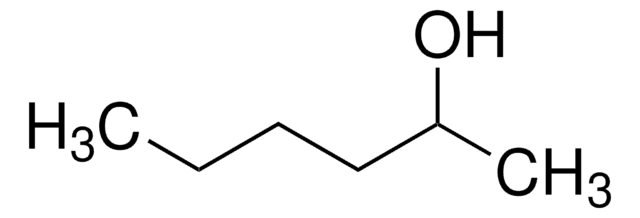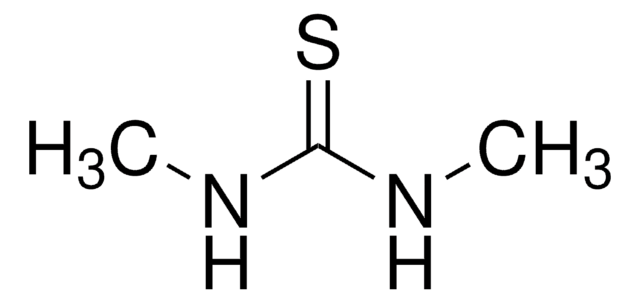H13303
1-Hexanol
reagent grade, 98%
Sinônimo(s):
Álcool hexílico
About This Item
Produtos recomendados
grau
reagent grade
Nível de qualidade
densidade de vapor
4.5 (vs air)
pressão de vapor
1 mmHg ( 25.6 °C)
Ensaio
98%
forma
liquid
temperatura de autoignição
559 °F
Lim. expl.
0.34-6.3 %
índice de refração
n20/D 1.418 (lit.)
pb
156-157 °C (lit.)
pf
−52 °C (lit.)
densidade
0.814 g/mL at 25 °C (lit.)
cadeia de caracteres SMILES
CCCCCCO
InChI
1S/C6H14O/c1-2-3-4-5-6-7/h7H,2-6H2,1H3
chave InChI
ZSIAUFGUXNUGDI-UHFFFAOYSA-N
Procurando produtos similares? Visita Guia de comparação de produtos
Categorias relacionadas
Descrição geral
Aplicação
- As an oil phase in the preparation of manganese zinc ferrite nanoparticles by precipitation in reverse microemulsion system.
- As a solvent in the separation of carboxylic acids and tetrahydrofurfuryl alcohol from water.
- As a solvent in the synthesis of ZnO (zinc oxide) quantum particles from zinc acetate by precipitation method.
Características e benefícios
Palavra indicadora
Warning
Frases de perigo
Declarações de precaução
Classificações de perigo
Acute Tox. 4 Dermal - Acute Tox. 4 Oral - Eye Irrit. 2 - Flam. Liq. 3
Código de classe de armazenamento
3 - Flammable liquids
Classe de risco de água (WGK)
WGK 1
Ponto de fulgor (°F)
140.0 °F - closed cup
Ponto de fulgor (°C)
60 °C - closed cup
Certificados de análise (COA)
Busque Certificados de análise (COA) digitando o Número do Lote do produto. Os números de lote e remessa podem ser encontrados no rótulo de um produto após a palavra “Lot” ou “Batch”.
Já possui este produto?
Encontre a documentação dos produtos que você adquiriu recentemente na biblioteca de documentos.
Os clientes também visualizaram
Nossa equipe de cientistas tem experiência em todas as áreas de pesquisa, incluindo Life Sciences, ciência de materiais, síntese química, cromatografia, química analítica e muitas outras.
Entre em contato com a assistência técnica










